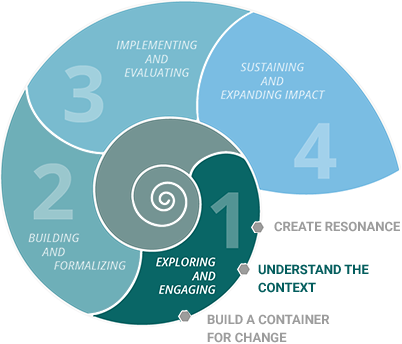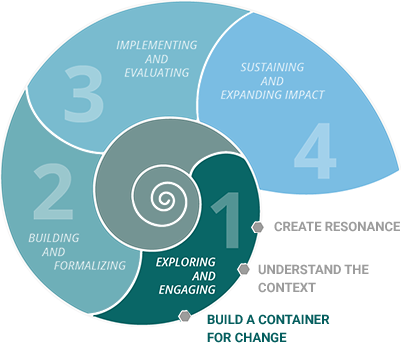
In the context of both formal and informal exchanges, the initiators of a collaboration process clarify the interest, commitment and participation of potential stakeholders. During this exchange process, the idea or the planned course of action becomes clearer. In informal bilateral conversations, the initiators can help to clarify the different possibilities for change and test for resonance with the relevant actors. This way, the common goal becomes clearer and is further developed with the help of stakeholder feedback.

Transformative change initiatives can only become successful, if the context is well understood. This includes a stakeholder analysis, a conflict mapping and a situation analysis. Beyond the important facts and figures it is crucial to understand formal and informal structures that have led to the current situation. Moreover, it is important to examine which attempts to tackle a challenge or solve a problem already exist or how structures and behaviors are impeding the envisaged transformative change process.

Transformative change needs people who see collaboration and dialogue as an important resource and who are capable of implementing it. Building a good Container for change consists of creating a small core group (between two and six people) made up of a few dedicated key stakeholders. This is a microcosm of the larger stakeholder system you want to shift into a functional collaboration ecosystem. The role of the container is to hold the process and ensure engagement, collaboration and dialogue of all participating stakeholders in a reliable way. Often supported by a project secretariat, its task is to keep the process on track.
